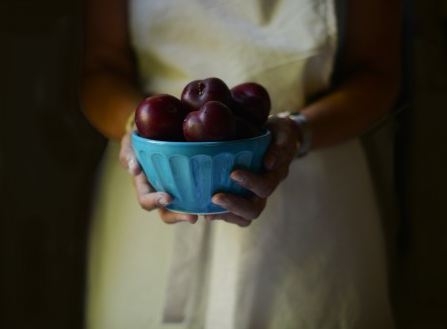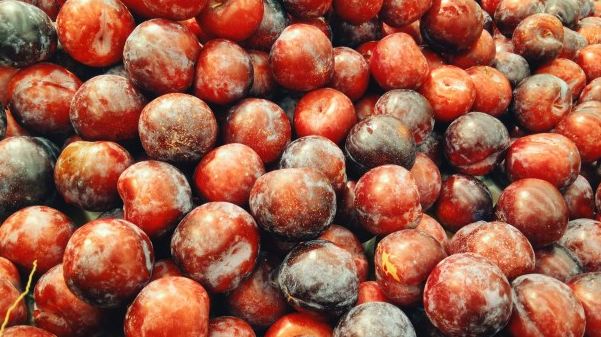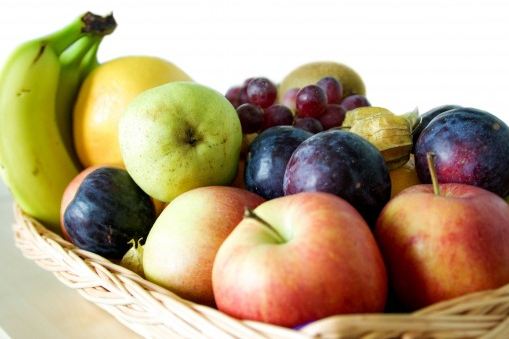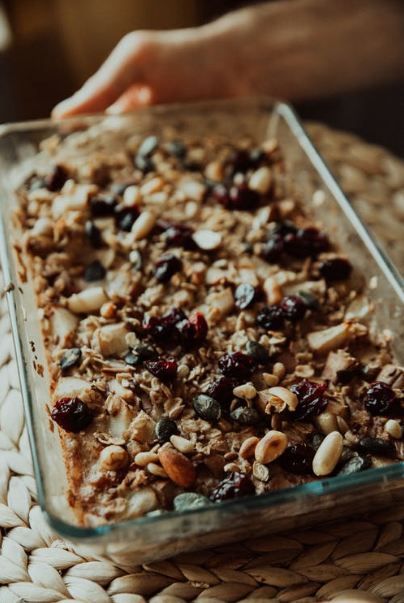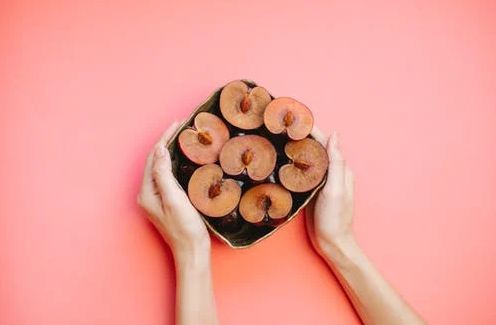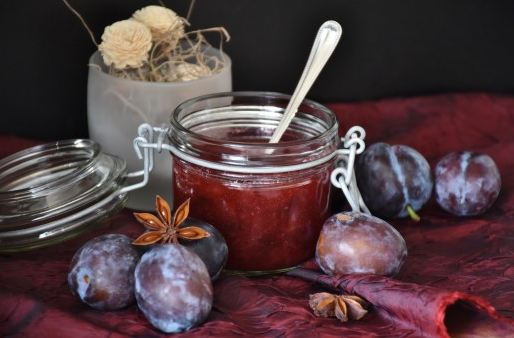Plums are drupes, which means that they’re a fruit with seeds inside hard, stone-like pits. Such fruits are also called stone fruit; other examples include apricots, nectarines, and peaches. However, plums are one of the most diverse stone fruits around, as they come in all kinds of sizes and colors. We can find small plums and large plums in red, green, purple, pink, and yellow skin. The flesh inside also comes in many colors, including orange, pink, and yellow.
This fruit also has a rich history. They originated in China thousands of years back, and then were cultivated in Japan, America, and Europe. Now, we have around two thousand varieties of plums all around the globe.
Plums are a favorite with many people for their sweetness and juiciness. They’re also useful for adding in desserts and salads, while their dried form (prunes) is both delicious and beneficial. In fact, plums themselves are full of health benefits no matter how they’re consumed (as long as you don’t add a ton of sugar to them). The Vitamin C they provide is great for helping the body’s healing process, building muscles, and enhancing blood vessel production. Below are just a few more benefits that should convince us to consume plums more often:
1. Lowering the Risk of Heart Disease
The nutrients and phytochemicals in plums help to soothe the cell inflammation that places pressure on our heart. That pressure could lead to heart disease, so relieving it lowers the chances of us suffering from heart attacks, strokes, and other cardiovascular issues.
If we take care to consume plums more regularly, this step might protect our heart in many ways. Studies have shown that plums have the potential to reduce bad cholesterol levels and high blood pressure, thus reducing the risk of heart disease.
2. A Lot of Nutrients
Both plums and prune have an impressive nutrient content. There are no less than 15 kinds of minerals and vitamins in them. The antioxidant and fiber content is also quite heartening.
Plums contain around 30 calories each, but they also give you 5 percent of the RDI of Vitamin A, 10 percent of the RDI of Vitamin C, and 5 percent of the RDI of Vitamin K. We also get essential nutrients like copper, manganese, and potassium from just one single plum.
Prunes might be slightly more fattening, with one ounce having 67 calories. However, you do get a lot of important vitamins in the dried form of plum. One interesting change is the level of Vitamin K, which goes up to 21 percent of the RDI.
While the extract mineral and vitamin count in prunes and plums differ, the benefits of both are apparent. However, we might want to limit ourselves when we’re consuming prunes, as the sugar content in dried fruit isn’t always beneficial for us.
3. Constipation Relief
When we’re constipated, we might often hear people telling us to consume prunes or prune juice. If we’ve tried this hack, it’s probably worked as well. This is mostly because prunes contain such a lot of fiber. Most of this fiber is insoluble, so it won’t blend in with water.
The fiber in prunes will add bulk to our waste and speed up the digestive process as well. Prune juice and whole prunes also have sorbitol, a sugar alcohol that acts as a natural laxative.
A word of warning here; if we consume a lot of prunes at a time, the results might not be desirable at all. In fact, too many of this fruit can lead to diarrhea, so limit yourself to just a quarter to a half cup a day.
If you prefer prune juice, first make sure you’re drinking the natural kind and not the artificial option. Even for the natural prune juice, your portion should not exceed 4 to 8 ounces in one day.
4. Getting More Antioxidants
Inflammation and free radicals are harmful factors for our body. They damage our cells from within, which is why we need to consume antioxidants to fight them off. Prunes and plums have a lot of antioxidants per serving, so you can consume more of these to enhance your general health.
Polyphenol antioxidants are present in very high levels here as well. These are especially good for enhancing bone health and even reducing the chances of getting heart disease, diabetes, etc.
Some research even shows that plums could contain double the number of polyphenol antioxidants than other popular fruit choices, even peaches and nectarines.
5. Lowering Blood Sugar
High blood sugar levels are very problematic, but they’re also increasingly common these days. Fortunately, plums have certain qualities that might help to control blood sugar and even lower it in the long run.
It seems like the high level of fiber in this fruit could lead to a positive effect on blood sugar. This occurs because fiber will slow down the rate of carb absorption after we eat a meal. With this effect, we may expect our blood sugar to rise only gradually instead of spiking dangerously as it does with diabetic patients.
Plus, plums and prune might be high in carbs but their effect on blood sugar is relatively low. This might be because they have the potential to enhance adiponectin production. The latter is a hormone which helps in regulating blood sugar.
While eating drupes such as plums might be linked to a lower chance of contracting Type 2 diabetes, it’s still important to limit our portions. This is especially essential if we’re opting for prunes instead of fresh plums.
6. Enhancing Bone Health
Many studies link the consumption of plums to a decreased risk on bone issues like osteopenia and osteoporosis. The main symptom of these conditions is usually low bone density. Getting more prunes in our system might help to prevent this loss and even reverse any damage that’s already been done.
While the studies aren’t clear on just how prunes have such effects on our bones, the antioxidant content and inflammation soothing effect might play some role here. Plus, prunes could increase certain bone-forming hormones and give us vitamins that protect the bone. These vitamins include phosphorus, potassium, magnesium, and vitamin K.
7. An Easy Addition
Most of us have a busy schedule, whether we’re studying, working, or a combination of both. People who want to start eating healthier often find many obstacles in their path. Along with financial and time constraints, one of the major deterrents of eating healthy is the convenience factor. Healthy food might be difficult to find and purchase, while preparing and taking it on the go is a whole other story.
If you’re looking for healthy, organic snacks that won’t break your diet, stocking up on prunes is generally a good idea. As long as you keep portion sizes small, these could be very filling and satisfying your sweet cravings. Keeping plums at home is another option; you’ll have a sweet, fulfilling snack whenever the need to snack arises.
It’s also very easy to consume both prunes and plums on a daily basis. They blend easily into smoothies, work well in salads, and are delicious on their own as well.
Conclusion
Plums and prunes both contain a lot of fiber, minerals, and vitamins. While prunes have a higher calories count, they’re easier to preserve and consume while on the go. The antioxidants in both forms of the fruit also help in reducing our risk of several health issues, including chronic health. While consuming anything in excess is not a good idea, it might be a good idea to put plums on our shopping list whenever they’re in season. To get the benefits of this fruit when they’re not in season, we can always go for prunes.


